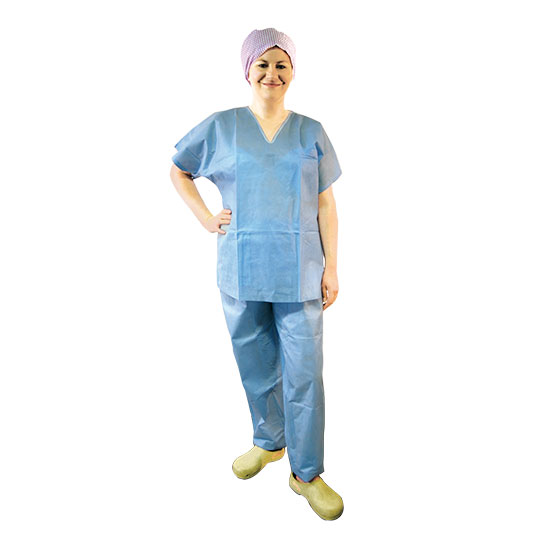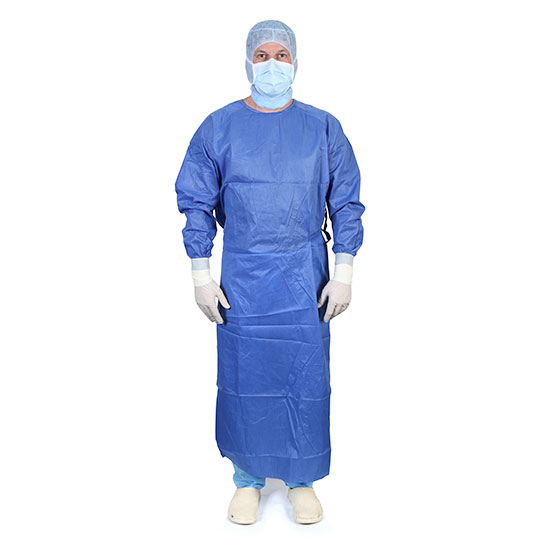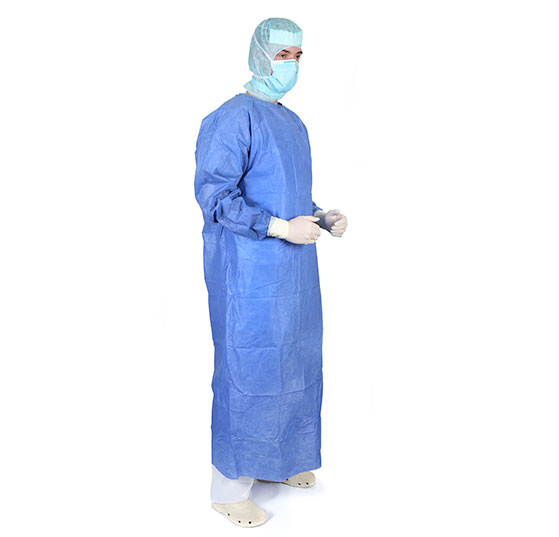
Surgical gowns and scrub suits
Fluids can facilitate the transfer of pathogenic materials. The American physician Dr. William C. Beck was one of the first to take action and promote the use of surgical gowns that repel fluids. It took many more years until for his idea to pervade in the form of today’s fluid resistant surgical gowns (both single and multiple use), which not only repel fluids, but also impermeable up until a certain pressure. The surgical gown is a medical device whose job it is reduce the level of pathogenic contact with the operative wound to such a level to prevent post operative infections. An impermeable gown also serves to reduce the risk of an infectious agent being transferred to the operating personnel.
Which requirements should a surgical gown fulfil?
- A surgical gown must be an effective barrier against germs
- A surgical gown must possess the corresponding physical characteristics to carry out this function
- Both the material and the finished product must serve to reduce the discharge of particles to a minimum
- And of course a surgical gown must be sterile
Note: The exact definitions of these demands are described in European Norm DIN EN 13795.




